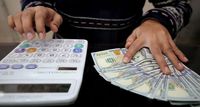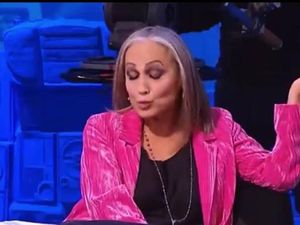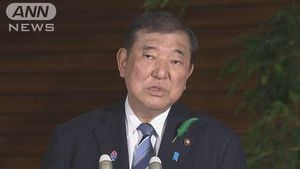On Tuesday, April 8, 2025, the Russian currency exchange landscape witnessed notable fluctuations, particularly with the dollar and euro rates seeing significant increases. The Central Bank of Russia announced that the dollar rate was raised from 84.2774 rubles to 86.1891 rubles, while the euro rate jumped from 92.9855 rubles to 94.7742 rubles. Additionally, the official yuan rate also saw an uptick, moving from 11.6044 rubles to 11.7286 rubles.
This adjustment in currency values comes in the wake of ongoing economic pressures and geopolitical tensions that have affected the Russian economy. The U.S. Ministry of Finance had previously imposed sanctions against the Moscow Exchange on July 12, 2024, which forced dollar and euro trading to transition to the over-the-counter market. Such sanctions have had lasting implications, altering how these currencies are traded and valued in Russia.
As of April 8, the dollar exchange rate was reported near 85.28 rubles, a notable increase from 84.56 rubles just two weeks prior. This rise in the dollar's value indicates a stabilization of the ruble since the latter part of March, despite a significant drop in oil prices earlier this month. The oil market has been particularly volatile, with Brent crude prices plummeting from $75 per barrel at the close of trading on April 2 to just $63 per barrel by April 7, marking a drastic 16% decline over four trading sessions.
On April 3, the OPEC+ alliance announced an unexpected increase in oil production quotas by 411,000 barrels per day, which is approximately three times more than previously anticipated. This decision is expected to result in an actual production increase of about 350,000 barrels per day, further influencing global oil supply and prices.
In response to these market dynamics, the Russian Ministry of Finance has indicated plans to sell currency from reserves as part of its budget rule. The ministry will sell approximately 35.9 billion rubles worth of currency from April 7 to May 12, 2025, to address significant deviations in expected oil and gas revenues. This measure is crucial as oil and gas exports account for roughly half of Russia's export revenue and up to a third of its budget income.
Despite the recent drop in oil prices, the ruble's decline has been relatively modest, weakening by only 3.3% during the same period that oil prices fell sharply. Analysts have noted that while the current situation may seem stable, it is essential to recognize the potential for accelerated devaluation of the ruble. The Central Bank of Russia has warned that if oil prices do not recover, the ruble could weaken significantly in the coming months.
Kirill Tremasov, an advisor to the Bank of Russia, commented on the current exchange rate, stating that it aligns with average historical values. However, he cautioned against assuming this strengthening of the ruble is stable, given the underlying economic pressures. He emphasized that while the ruble's current strength is partly due to a favorable trade balance and speculative investments, it remains vulnerable to geopolitical developments.
Looking ahead, analysts predict that the ruble will likely experience relatively stable dynamics through the end of April, with trading expected to fall within the range of 84.0 to 86.0 rubles for the dollar, 92 to 97 rubles for the euro, and 11.5 to 12.0 rubles for the yuan.
The ongoing geopolitical tensions, particularly regarding the conflict in Ukraine, continue to cast a shadow over the Russian economy. The U.S. administration, led by President D. Trump, has indicated that reaching a peaceful resolution in Ukraine is unlikely in the near future. This uncertainty has prompted discussions within the White House about new strategies to increase pressure on both Moscow and Kyiv.
While there have been talks of potential easing of sanctions, the European Union remains steadfast in its position, actively discussing a 17th package of sanctions against Russia. This ongoing tension highlights the precarious nature of the ruble's current strength and the potential for rapid changes in the currency's value based on international relations.
In summary, the currency landscape in Russia is currently characterized by rising dollar and euro rates amidst a backdrop of fluctuating oil prices and geopolitical uncertainty. The actions taken by the Central Bank and the Ministry of Finance will be critical in navigating these turbulent economic waters as Russia seeks to stabilize its currency and manage its financial resources effectively.






